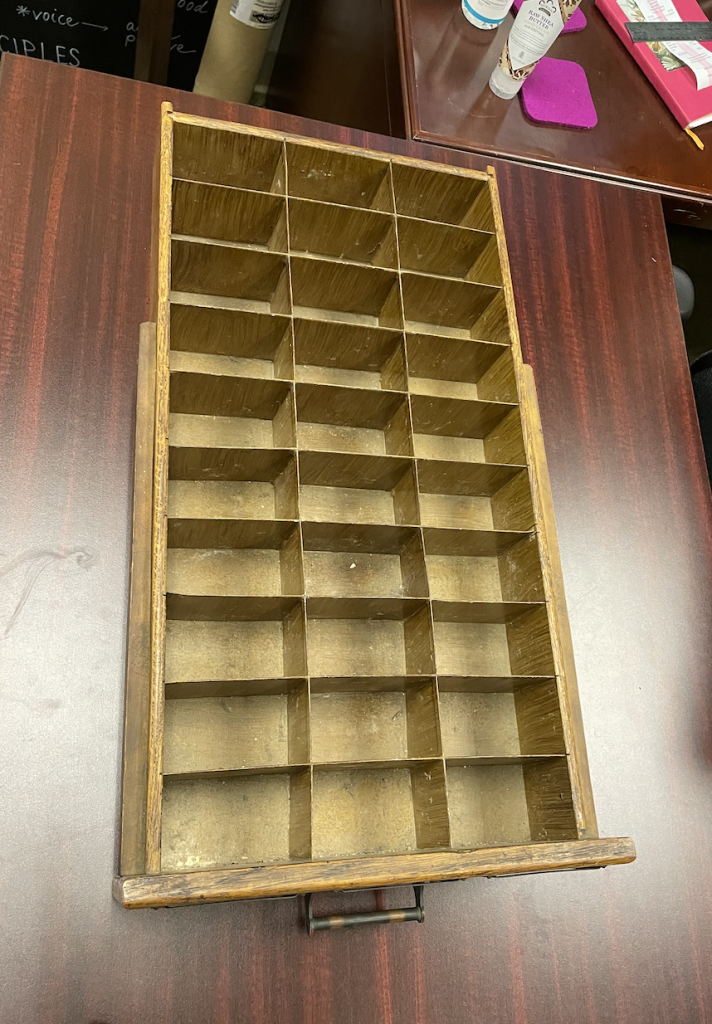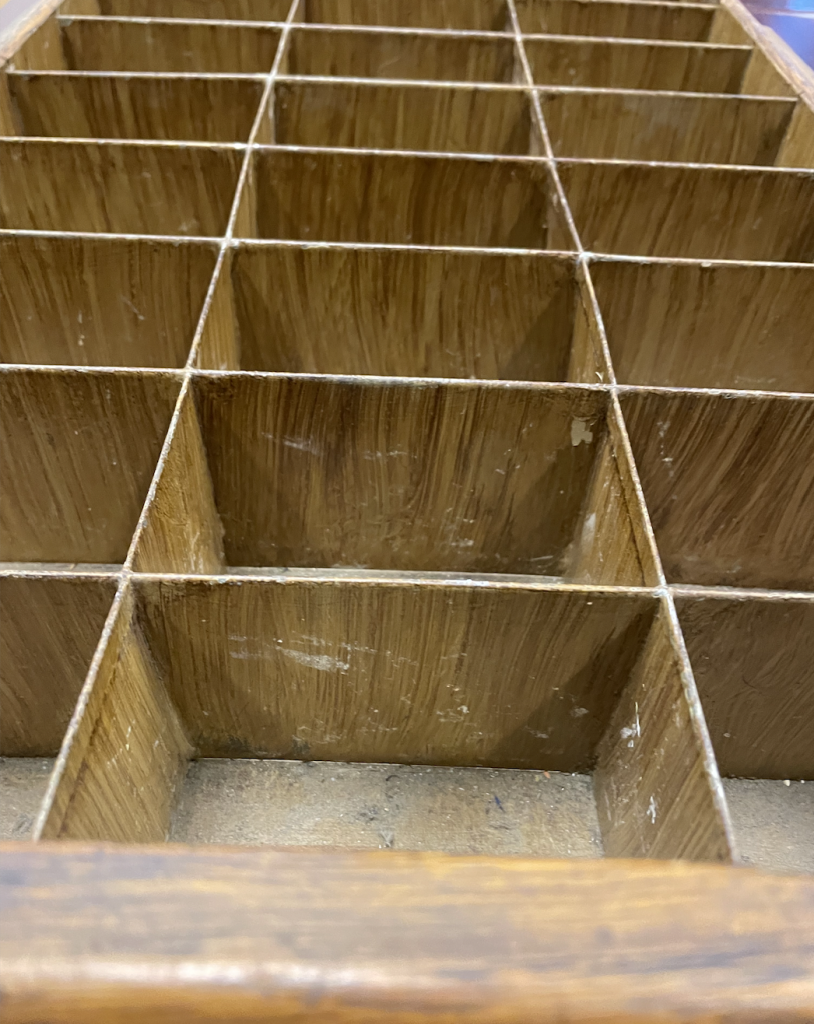16 Introduction
When we think of archaeology, we often conjure images of intrepid explorers unlocking deeply hidden secrets in forbidden temples, or gleaming white marble museums, preserving our historical legacy for generations to come. Even though archaeology is a study of the past, it is not spared from the consequences of present-day decisions. Conversations about repatriation, museum/acquisition malpractice, and cultural heritage are growing more common, thanks to the brave and tireless work of activists and scholars, who are often members of colonized and marginalized communities. This gradual shift in public opinion has directed more attention and scrutiny upon large institutions like museums. So, what do we do when we are confronted with a dusty wooden drawer full of artifacts?

That is the question we asked ourselves when we were made aware of a desk drawer full of Greek potsherds. We were able to spend time with the drawer and its contents in a seminar, and then the four of us (Lilly, Mary Iris, Dede, and Louie) decided to undertake the responsibility of cataloging, researching, and determining a path forward for these objects. The only thing we knew about them was that they had been sitting in the drawer for a long time, and they had been put there by a late professor named Harry J. Carroll. Our initial goals were:
- Explore the problems with owning/having un-provenanced antiquities
- Explore possible solutions–“What now?” Hopefully, implement these solutions (display, repatriation, etc)
- Educate on what happened to these objects and explore:
- History and practices of archaeology
- Historical/cultural/colonial predilections toward collecting
- History of the Classics department and its relationship to “the drawer”
- Create a living document attempting to restore the dignity and history of the objects, with photos of the objects to share with our community. We decided to recommend that these images not be used in any other context.

- We have attempted to return some dignity to the objects we have found, and the rich historical and cultural contexts that they have been taken from. Our handling and photography of the fragments reflect the idea that our handling and processing of these objects, no matter our intention, is inherently destructive, and validates the colonial systems that enabled them to be taken in the first place. It feels natural, and human, to want to “solve the mystery” of these sherds, but our group has made a conscious choice to restrain this impulse. As academics, we would not and can not gather valuable or valid information from objects robbed from, and robbed of, their historical contexts.

